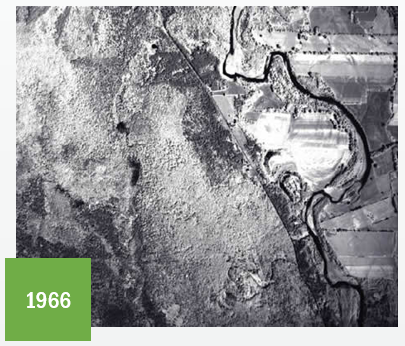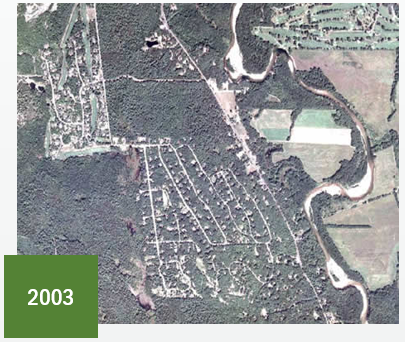New Report Unravels the Complex Issue of Forest Fragmentation in Vermont
Apr. 27th 2016The Vermont landscape is no stranger to forceful change. From a towering wall of receding ice that painted the soil in till and outwash, to hurricane floods blowing out river banks, nature has undoubtedly left its mark. The future of Vermont’s landscape is now at the mercy of human-induced disturbance, in particular forest fragmentation, which significantly alters the landscape and slowly erodes the value of connected forest. Fragmentation also reduces Vermont’s ability to support economic activity and ecosystem services through its iconic forestland, which is driven in part by a greater number of smaller parcels.


The 2015 Fragmentation Report, prepared by the Vermont Department of Forests, Parks and Recreation, explores the value of structurally diverse vegetation, as well as the drivers of fragmentation. The authors highlight key benefits of intact forests by going beyond general forest descriptions (such as composition, arrangement, size, etc.) to tell a story of forest structure and function. Using this framework, they make a strong case that forests are foundationally important to Vermont’s residents and guests. Several key numbers reveal economic value of the state’s forest products: $1.4 billion in economic output to Vermont’s economy, which employs 10,555 people, and makes up 8% of the state’s manufacturing value. Other value not represented in these numbers include forest recreation, tourism, and “the intangible significance of enjoying forests, the natural surroundings, and the quality of life associated with this working landscape”.
Vermont prides itself on forest related industry, but also venerates diverse wildlife and plant species, which are sustained by expansive tracts of suitable forest habitat. Current trends put these habitats on the chopping block of parcelization and fragmentation. Unlike outright deforestation, fragmentation is a process in which large expanses of habitat are transformed into smaller patches of diminishing area, isolated from each other by a diverse patchwork, ranging from native flora and fauna to human-dominated land use. A variety of factors currently drives this particular landscape change, including exurbanization, increased property value and taxes, and an aging demographic.
The authors note that the demographic of primary forest owners in Vermont is largely comprised of males over the age of 55. “As landowners age, the question of land transfer becomes more important”. Catalyzing demographic shifts is an increased rural population growth and an overall high development rate (twice as high as the population rate). Decisions made by Vermont’s landowners, and their heirs, will drive Vermont’s ability to remain connected under ever fragmented conditions. Certain considerations for landowners may include enrollment in the Current Use Program, adoption of wildlife management plans, land conservation, or neighborhood planning, such as shared timber stand improvement activities.
Although researchers, land managers, and conservation practitioners understand the negative outcomes and potential mitigating tools associated with forest fragmentation in Vermont, the report encourages a narrative that will strengthen policy and future monitoring. Six avenues to enhanced forest policy include education and outreach, conservation, landowner incentives, land use planning, sustainable forestry, and Vermont’s forest economy. Furthermore, the Vermont Department of Forests, Parks and Recreation makes a call for action that builds on our current knowledge of Vermont’s forests, but does so at a higher resolution in the context of sustainable development and management.
 ecoNEWS VT
ecoNEWS VT